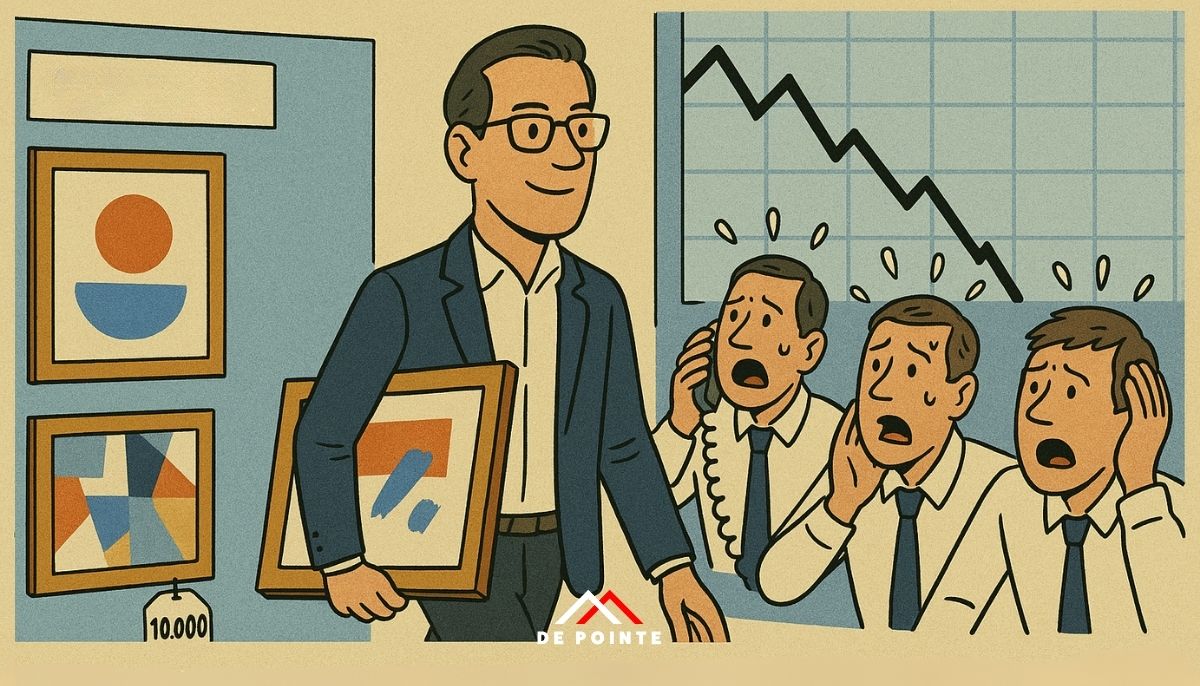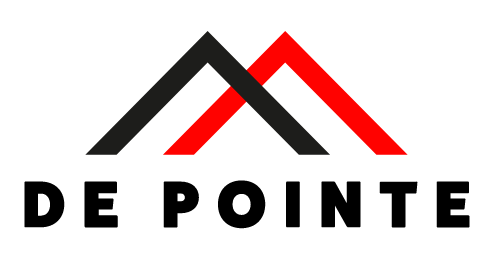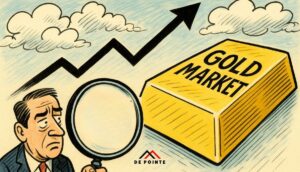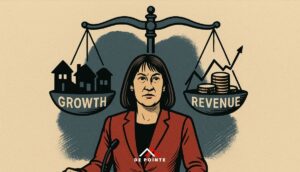Article

In today’s uncertain economic environment, investors are increasingly exploring asset classes that offer protection from volatility, provide portfolio diversification, and yield non-correlated returns. One such category seeing renewed interest is art investment, not just the headline-grabbing multimillion-pound auctions, but the growing market of affordable art to invest in.
At De Pointe Research, we believe that art offers one of the most compelling combinations of cultural and capital value. And crucially, the art market is no longer the preserve of ultra-high-net-worth individuals. With a strategic approach, investors can access museum-grade works at accessible price points, entering a market that has quietly outperformed many traditional investments over the past decade.
Why Consider Affordable Art as an Investment?
Art’s appeal as an asset class lies in its scarcity, tangibility, and independence from traditional markets. Over time, select artworks can appreciate significantly in value, particularly those created by early-career artists or pieces with limited availability and institutional recognition.
According to the Knight Frank Luxury Investment Index, art was one of the best-performing alternative assets in 2022 and 2023, with returns of 29% and 11% respectively. These returns often come with lower volatility than equities and bonds, especially during economic downturns.
But beyond headline numbers, affordable art offers other significant benefits:
- Portfolio Diversification: Art’s low correlation with traditional financial instruments provides a hedge during market turbulence.
- Inflation Protection: Tangible assets like art tend to hold their value when fiat currency loses purchasing power.
- Cultural Capital: Art delivers aesthetic and emotional returns, offering personal satisfaction alongside financial potential.
- Legacy and Estate Planning: Art can be passed down across generations, often appreciating in value over decades while offering significant tax planning advantages.
Defining “Affordable” in Art Investment
The term affordable art to invest in is relative, but in the context of strategic investment, we generally refer to works priced between £2,000 and £20,000. This range offers entry into the market without sacrificing investment quality or long-term potential.
In this bracket, investors can access pieces by early-to-mid-career artists with professional representation, growing critical recognition, and exhibition history. These are often the artists who, if supported by the right institutions and collectors, go on to generate significant returns.
What makes this bracket particularly attractive is its scalability. Investors can begin with one or two pieces and gradually build a portfolio, spreading risk across artists, mediums, and markets.
What Makes Art Investment-Grade?
Not all art is created equal from an investment standpoint. At De Pointe Research, we employ a clear set of criteria when identifying affordable art with strong upside potential:
- Gallery Representation: A reputable gallery often signals that the artist is being actively developed and marketed.
- Institutional Support: Artists who exhibit at museums or are collected by public institutions tend to see stronger long-term appreciation.
- Critical Reception: Positive press, awards, and curatorial recognition can all add credibility and increase future demand.
- Scarcity: Limited editions or unique works drive value through constrained supply.
- Market Trajectory: A consistent pattern of rising prices and increasing demand in primary or secondary markets suggests strong return potential.
A proper investment in art goes beyond aesthetics; it is a structured process rooted in data, due diligence, and access to reliable sourcing.
The Risks and Realities of Investing in Art
While the rewards can be substantial, investors must also consider the risks:
- Illiquidity: Art is not a highly liquid asset. Sales may take time and often involve galleries or auction houses.
- Market Timing: The art market can be opaque, and valuations may fluctuate based on trends and collector sentiment.
- Storage and Insurance: Unlike stocks, physical artworks require careful storage and protection, often incurring additional costs.
That’s why it’s essential to partner with research-driven professionals who can help mitigate these risks and source well-documented, high-quality works.
Accessing Vetted Affordable Art Opportunities
Navigating the art world can be a complex endeavour. Investors often face a lack of transparency, inconsistent pricing, and difficulty accessing credible opportunities. We collaborate with leading professionals in the art investment space to provide clients with secure and profitable exposure to this unique asset class.
Final Thoughts: Investing with Confidence
Affordable art is more than a passion pursuit; it is an emerging frontier of tangible wealth creation. As institutional investors and family offices continue to diversify into alternative assets, art stands out for its resilience, cultural cachet, and long-term performance.
For those ready to take their first steps, the key lies in research, strategy, and access. De Pointe Research bridges that gap, connecting qualified investors with the information and support they need to invest in art with clarity and confidence.
Want to explore affordable art investment opportunities tailored to your goals?





